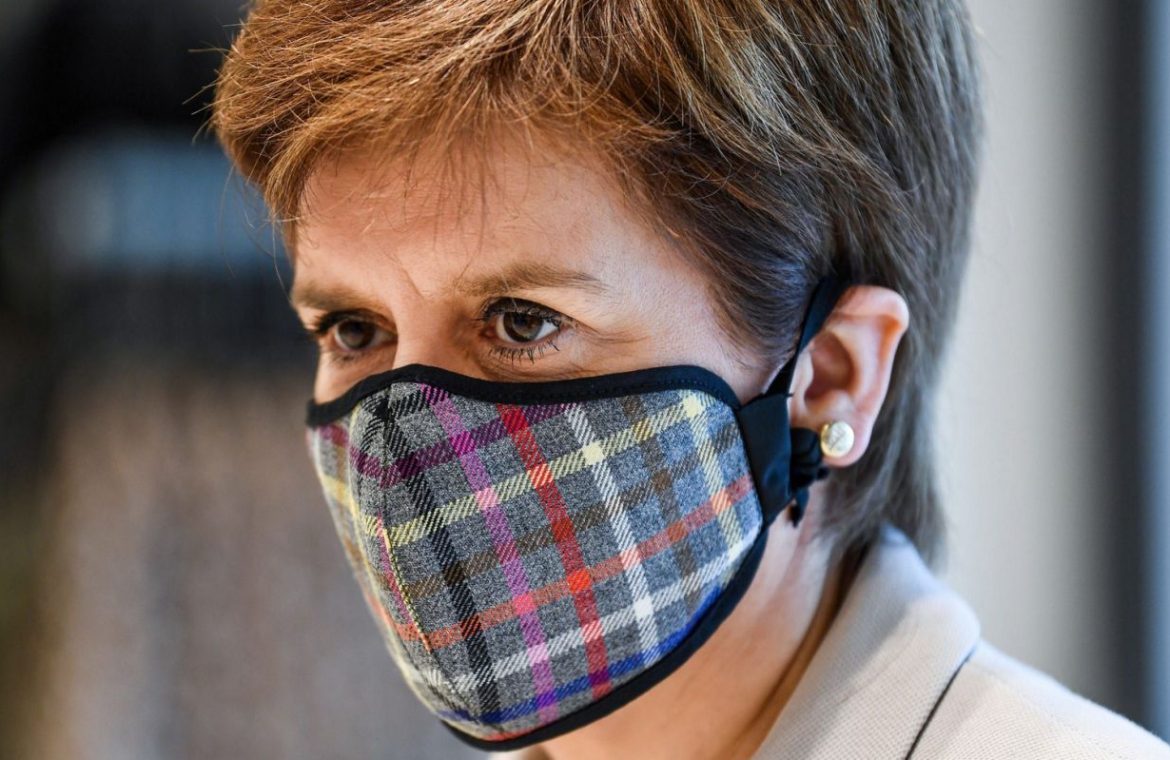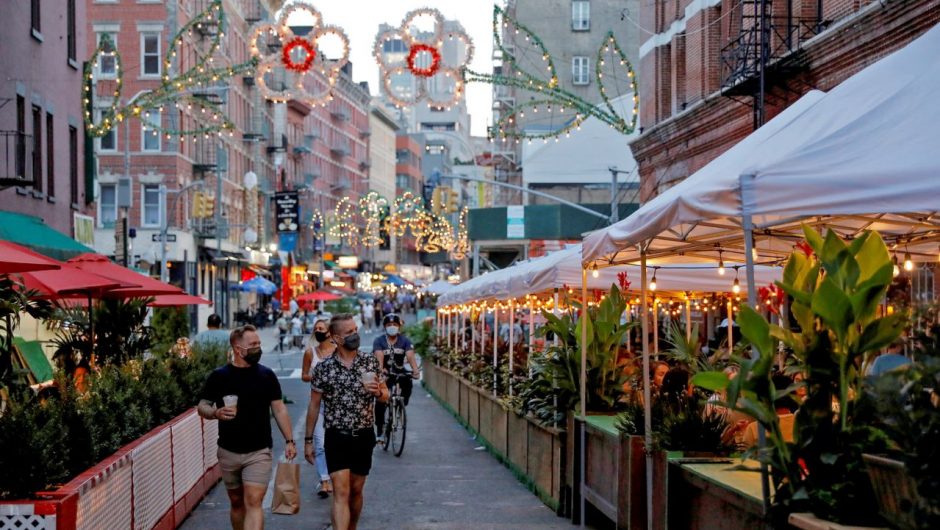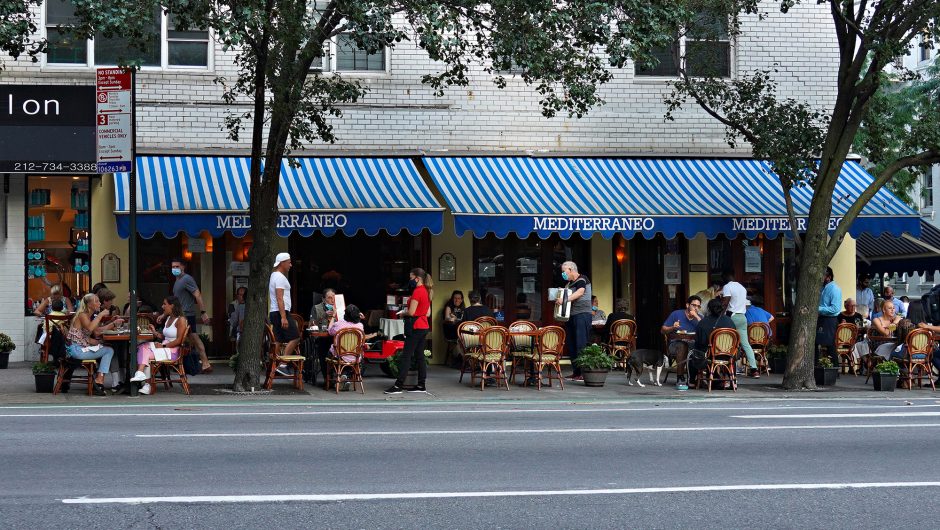Nicola Sturgeon – Reuters
Nicola Sturgeon spent much of July telling anyone who would listen that the prevalence of coronavirus in England was “five times” higher than in Scotland.
The figure was deployed to justify her refusal to rule out effectively closing the border by imposing quarantine on travellers from England, and her highly controversial move to set her a Scotland-only policy on air bridges, which airports warned put livelihoods at risk.
The day after she first made the claim, masked nationalists in hazmat suits descended on the border near Berwick-upon-Tweed, shouting abuse at English “plague carriers”.
Scottish protesres – Euan Cherry
Alongside their saltires and SNP flags (the First Minister refused to confirm whether her party took any disciplinary action against participants) the wording on their banner was instructive: ‘Keep Scotland Covid Free’.
Sturgeon’s “five times” claim later turned out to be as dodgy as the one painted by protesters onto a bedsheet.
In a rare intervention, the UK statistics watchdog rebuked the Scottish Government for its use of misleading figures, saying the “un-caveated” comparison should never have been made. How did Sturgeon respond?
An mea culpa at Holyrood, where she managed to make the claim three times in just one day, for misleading MSPs? A P45 for the official or, more likely, the SNP spad who provided the First Minister with unsound data?
Instead, she accused opposition politicians who dared challenge her on the episode of politicising the crisis. That day, she was named the world’s fifth most eloquent “world leader” alongside the likes of Jacinda Ahern of New Zealand and Germany’s Angela Merkel.
Judges praised her for her straight talking. Scottish unionists didn’t know whether to laugh or cry.
And of course, Scotland has not been “Covid free” since February. Early on, Ms Sturgeon took the decision to keep a major outbreak at a conference in Edinburgh from the Scottish public.
A kiltmaker who dressed delegates and a guide who took them on a walking tour across the city questioned why they were never spoken to by contact tracers and wondered whether they had unwittingly played a role in spreading the virus across the Scottish capital.
Story continues
According to recently-published figures from the Office for National Statistics, Scotland had the third-highest rate of excess deaths in Europe by the end of May, behind only England and Spain. A write-up of the story in The National, a pro-independence daily newspaper dubbed by some as ‘McPravda’, informed readers that England had the worst excess deaths in Europe.
It merely noted that the ONS had also published figures for Scotland, but did not inform readers what these were.
In Scottish care homes, Covid-19 has been catastrophic. Almost half – 46 per cent – of Covid-19 deaths registered have come in care homes, compared to under 30 per cent in England and Wales. When confronted with the disparity, Ms Sturgeon simply claims the English figures, drawn up by the independent ONS, must be wrong.
Jamie Jenkins, a former head of health analysis at the ONS, said:
The main pitfall in comparing countries total Covid-19 deaths is that you are at the mercy of how each define and collect their own data. But to overcome this, focusing on excess deaths, which are the total number over the average, means you can remove such issues.
“You can do this and compare England and Scotland with the rest of Europe, as recently done by ONS. The data shows England has seen the highest excess deaths in Europe through the pandemic with Scotland worse than any other country with the exception of Spain.”
It is true to say that coronavirus deaths in Scotland have fallen drastically over recent weeks, compared to England. But even here, the public may not quite be getting the full picture.
According to the daily figures cited at her briefings (Sturgeon has maintained her daily press conferences long after the UK Government ditched theirs, with opponents complaining they have become party political broadcasts) there have been no deaths in Scotland since July 16.
However, unlike in England where anyone who has tested positive and subsequently dies is counted as a Covid-19 death, whatever the cause, in Scotland it is only counted if death came within 28 days of their first positive Covid test.
National Records of Scotland (NRS) figures, which include all cases where coronavirus is mentioned on a death certificate, present an alternative, and more comprehensive, analysis. While these are also mentioned by Sturgeon at her briefings, these only come out once a week, and are presented alongside the more flattering statistics.
This week’s NRS figures, for example, showed that there were in fact 34 Covid deaths in Scotland over the four weeks to August 2, compared to the three recorded under Sturgeon’s more commonly cited measure.
Criticism of ‘stay alert’ message
Even on Sturgeon’s more “cautious” approach to easing lockdown, differences with England are not as pronounced as they might appear. She was scathing of the UK Government’s move away from the “stay at home” slogan, which was replaced with “stay alert”.
Sturgeon led a chorus of disapproval, saying “I don’t know what it means”, only to quietly ditch her own stay at home message a few weeks later in favour of the equally cryptic “stay safe”.
To uproar from businesses, she also initially refused to countenance changes to the two-metre rule until the virus was “virtually eliminated”, only to then announce “exceptions” that were remarkably similar to UK Government changes.
As one exasperated UK Government source put it: “We’ve been hammered for going for one metre plus. Then she announces two metres minus.”
Sceptics also question what role population density has had on differences in figures. Scotland has one of the lowest rates of people per square kilometre in Europe, while England has the third highest. The area covered by just one of Scotland’s 14 health boards – NHS Highland – is larger than Wales, yet it serves fewer people than live in the London borough of Ealing. Glasgow and its surrounding areas aside, Scotland simply does not have the urban concubations, where people inevitably mix in far closer proximity, that England has.
So whatever Sturgeon’s foot soldiers might claim, Scotland is certainly not ‘Covid free’. Opinion polls suggest that she has convinced Scots that she is making a better fist of tackling the virus that Boris Johnson (The First Minister recently recorded an approval rating of +60, while the Prime Minister was on -39, and even voters in England think she is doing a better job).
Devolved leaders of Wales and Northern Ireland, Mark Drakeford and Arlene Foster, would be justified in wondering where their plaudits are, given both have presided over better figures than Scotland’s.
Those who claim those impressive poll ratings are at least in part explained by Ms Sturgeon’s undisputed talent for communicating with voters, alongside her willingness to pick fights and stoke grievances with London while leaving the Treasury and Number 10 to worry about the economic recovery, might just have a point.








